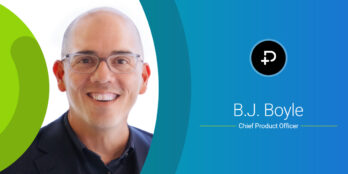
Real-Time Visibility for Health Plans & Payers in Value-Based Care
 4 min
4 min
The transition to value-based care and the need for real solutions that empower both health plans and providers to lead change is upon us. In fact, the Centers for Medicare and Medicaid Services (CMS) projects that by 2025, 100 percent of Medicare providers will be in two-sided risk arrangements with Medicaid contracts and commercial payers following suit. The shift to value-based care is positioned to accelerate and the healthcare industry must strive to gain deeper insights that support high-quality, affordable care.
In this first blog of our series on how health plans can support the transition to value-based care, we will focus on how real-time visibility into member activity throughout the care continuum is key to remaining competitive and driving quality in healthcare.
Collaborative Care Across the Continuum
A collaborative, value-driven care environment relies on every care partner being on the same page: health plans, hospitals, specialists, community-based organizations, and so many more, including their clinicians, administrators, and billing teams. Most healthcare data, however, is outdated, disparate, and siloed in various technologies. All too frequently information is lost in the shuffle — administrative teams spend hours cold-calling members to get critical information, authorize care, and update records. This hinders health plans’ ability to effectively support positive discussions between providers and their patients, as well as to drive quality and financial performance across the care continuum.
Technology that enables real-time member health visibility by extracting clinical and other relevant data and delivering essential notifications to the point of care can make an enormous difference. With the right technology, healthcare providers will not waste hours pecking away at a database, making calls, or sending faxes to receive authorization to perform a lifesaving operation. For providers and payers participating in value-based care arrangements, including accountable care organizations (ACOs), real-time visibility enables everyone to have equal access to needed information, such as when there is a transfer from a hospital to a skilled nursing facility, creating the ability to manage the members’ clinical needs and total cost of care.
For the downstream care team, or other stakeholders, having visibility means knowing that nothing critical — such as frequent emergency department (ED) utilization due to co-occurring physical and behavioral health needs, or known medication allergies — is missed.
The Right Care at the Right Time
Having real-time visibility across the care continuum also helps to ensure members have access to the right care at the right time, which is consistently an ongoing challenge for many healthcare stakeholders. When members seek care from different providers in various settings, key information often goes missing, resulting in duplicative or low-value care. Since both payers and providers continually gather health data, it’s important they remain on the same page, regardless of where the member is in their healthcare journey. One of the ways to improve access to care is to leverage nationwide information technology networks that connect each care entity in the delivery chain (e.g., emergency department, post-acute, behavioral health, etc.) and provide real-time visibility to all of them simultaneously. This enables care teams to share and access important insights that help to:
- Ensure appropriate care and setting(s)
- Minimize conflicting or duplicative care
- Support transitions of care
- Offer a more accurate diagnosis or treatment plan
- Prevent admissions and readmissions
- Facilitate timely interventions
- Reinforce post-discharge follow up
For more information, keep an eye out for the next bog in our Value-Based Care for Payers series coming soon!
Want to learn more about how health plans and payers can support the transition to value-based care?
February 14, 2023






